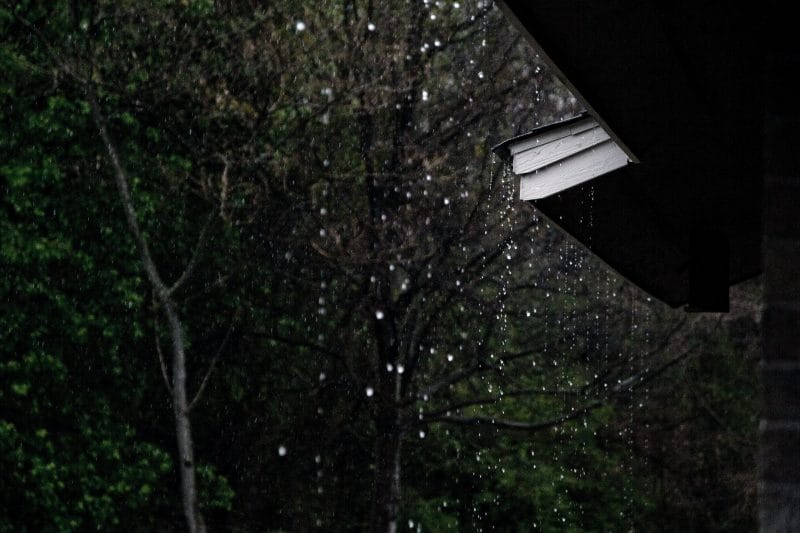Effective Roofing Tips for When It Rains
If your home is living in rainy conditions, it’s a good idea to be sure your roof is strong enough to protect everything and everyone inside. Here are some effective roofing tips to keep in mind.
Virginia has a wide variety of weather, some of which can wreak havoc on homes. The roof of any home is its first line of defense against the elements. It needs to be in good repair to ensure that it keeps the occupants and possessions inside safe and snug.
Climate affects roofing greatly, but thankfully, there are ways to protect yourself from the Virginia climate. There are many types of roofing materials available with a wide range of prices. But regardless of the price, some are much less advisable for use in rainy environments. Depending on the environment you live in, different materials will react differently. It’s important to be aware of these differences and to follow these roofing tips for when it rains.
Rain, Rain Go Away
With its coastal frontage, the Virginia climate affects roofing since your roof is subject to heavy rains throughout the year. Storms blowing in off the ocean bring torrential downpours during hurricane season. This deluge of water can cause problems for some roofs. They do not shed the precipitation quickly enough to remain water-tight. Over time, materials and under layers can degrade from exposure to moisture.
Metal roofing is a great option for those looking to repair or replace a current roof, as it easily withstands all types of weather. Metal roofing materials, whether panels or shingles, are impermeable and redirect water rapidly, ensuring there is no leakage.
Winds That Huff and Puff and Blow
While Virginia does not usually see hurricanes come directly ashore due to its location between the north and south hurricane corridors, it does see its fair share of high-speed winds and tropical storms.
Residents who invest in a roof made from steel, aluminum or copper will suffer substantially fewer incidents of damage. Manufacturers rate their product according to wind speed and many types are graded for gales well over 100 miles per hour. Because of this, the windy climate affects roofing, and your roof must be able to withstand high pressure and high speed winds.
Wintry Weather
The average yearly snow accumulation varies greatly across the state of Virginia, with some areas receiving over 50 inches per year. Metal roofing materials encourage snow melt and snow will slide right off of most designs. Along with preventing ice buildup and leakage, this also ensures that the weight of all that snow isn’t bearing down on the structure of the roof all winter. Metal roofing is superior for Virginia’s climate in every season and during even the worst storms.
Which Roofing Material Should You Use?
There are many roofing tips available to ensure that you choose the perfect material for your climate. Your roof protects you and your loved ones, it is an important aspect of your house. You want to choose a material that is durable and long lasting.
These roofing tips will ensure you stay safe in your rainy environment.
Asphalt shingles
Also known as composition shingles. They are not totally waterproof and will not do well unless on a pitch of at least 4 inches for every foot. Expect them to last around 20 or so years.
Shingles are not the best choice for extreme climates. They become soft in hot weather and tend to crack in severe cold. Because of their rough surface, they tend to catch and hold leaves, tree limbs, and other debris. However, they are among the least expensive to purchase and maintain.
If you live in a mild climate, they will probably serve you well.
Ceramic tile
Because of their weight, a ceramic tile roof will often need additional support. Though a little bit pricey, ceramic tiles are good looking, especially if you’re trying for a Spanish or Italian effect. Made in a kiln from natural clay, they are brittle and can break easily especially under the weight of wet, heavy snow. But rain, and in a temperate climate, with a minimum of care they can last 50 years or more.
Sheet metal
For a sure protection from inclement weather, steel sheet metal roofing may be your best bet. The price is about mid-range when compared to asphalt shingles or ceramic tile, and lifespan is much greater. Coated with aluminum and zinc alloy, they can last well past 50 years. Metal roofs can also be painted any color to match or contrast the attached building.
A higher priced version made from zinc and copper can last as long as 100 years. And the variety of choices doesn’t stop there. Titanium and stainless steel are also available for those who seek only the best. Also roofing with special coating can deflect the sun’s heat to provide additional cooling.
Wood shakes or shingles
Wood is not your best choice for wet climates. The quality of the product varies and is prone to splitting and warping even at it’s best. If you live in an environment that does not get hit by hard rain, it can be a great option.
Roofing Tips Conclusion
These are four different types of roofing materials, that each have their benefits. If you live in a rainy climate, make sure you know which options will serve you best. And if you need more information, roofing tips, or professional assistance with your roof, contact a roofing contractor.



